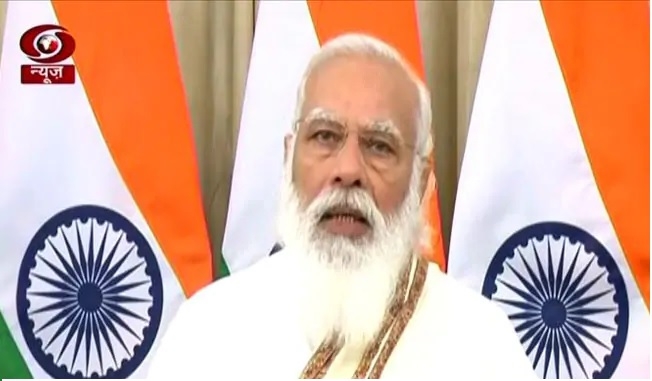Chauri Chaura Metaphor
| Date :06-Feb-2021 |

By Vijay phanshikar
The fight for Independence took place not only in the streets and legislative chambers and legal courts but also in the playfields and theatres of art and massive sheds of industry. Literature was one tool the country used liberally and effectively to make the British appear as they actually were -- villains, rogue-governors.
Gorakhpur, February 4 (PTI): Prime minister Narendra Modi, on Thursday, said, it was “unfortunate” that those who laid down their lives in the Chauri Chaura incident in 1922 were not given due place in the pages of history.
“Whatever happened in Chauri Chaura 100 years ago was seen as a simple incident of arsoning of a police station. Its message was very big and wide. Earlier, whenever there was talk of Chauri Chaura, it was seen in the context of a simple arsoning incident. But the fire was not only at police station but in the hearts of Indians as well”, the Prime Minister said, while inaugurating via video conferencing the centenary celebrations of the historic Chauri Chaura incident, a landmark event in the country’s fight for Independence. “Chauri Chaura was a self-motivated struggle of common people. It is unfortunate that martyrs of this incident were not given prominent place in the pages of history. ...”, the Prime Minister rued.
THE whole nation shares the lament of Prime Minister Mr. Narendra Modi. For, the lament also underlines the national grief that many similar episodes did not get their due importance in the story of the glorious struggle for Independence that ultimately saw the British exiting the country on August 15, 1947.
It is really unfortunate that the Chauri Chaura incident was viewed by many as an act of violence -- himsa -- that contradicted Mahatma Gandhi’s principle of non-violence -- ahimsa. The Mahatma himself felt that the nation’s masses were not prepared for a non-violence struggle and withdrew his call for non-cooperation a few days after. Despite the withdrawal of the campaign, the British courts sentenced as many as 19 freedom fighters to death and sent 110 persons to prison, triggering still further an angry nationwide reaction against the British.
Thus, the death sentence to the 19 freedom fighters served a great national cause. But their martyrdom did not much attention in the national story of struggle for Independence may be because Gandhiji had decried the attack of the angry mob on police station. In fact, that attack was a reaction to the police firing on an otherwise peaceful crowd of slogan-shouting freedom fighters from among whom 3 persons were killed by police bullets and several injured. Though Gandhiji did not find any justification in the freedom fighters’ angry march on the police station, the common people kept feeling strongly that the 19 people who were sentenced to death should have been treated with a greater respect as national heroes.
This is exactly what Mr. Narendra Modi said as he inaugurated the centenary celebrations of the incident on February 4, 1922 -- fully in tune with the national sentiment.
Chauri Chaura incident is one of many such episodes that did not appropriate attention in the national comprehension for reasons known and unknown. Many national heroes were sidelined and many stories many an episode ignored (may be inadvertently or otherwise) when the bigger story of the national struggle was scripted. This is the real grief that still haunts the nation’s collective conscience.
It is truly unfortunate that the story of the Ghadar movement as well that of the Azad Hind Sena (Indian National Army) has been told to the nation only half-heartedly -- again for reasons known and unknown. It must be confessed that literally hundreds of glorious episodes in the struggle for Independence have been kept away from proper projection into public awareness for reasons known and unknown. Many great stories of people’s participation in freedom struggle in southern as well as north-eastern parts of the country, too, have been kept out of public conscience for reasons known and unknown.
The full story of the efforts made by Swatantryaveer Sawarkar, of first armed revolutionary Vasudeo Balwant Phadke -- within years of 1857 War of Independence -- has also never been told to the nation in full detail. Let us also not miss the fact that the full story of 1857 War also has not been told to the nation’s younger generations. And we cannot part with the statement before we grieve that the story of armed struggle by revolutionaries in the category of Bhagat Singh-Sukhdev-Rajguru-Chandrashekhar Azad-Batukeshwar Dutt has not been told with a proud vehemence to the people of this great nation.
All this gets reflected in the Prime Minister’s grief through the metaphor of Chauri Chaura. In fact, it should become a national endeavour to put all that bigger story together and tell it to the succeeding generations so that we know how we the People of India fought the British rulers in every nook and corner of India and made them impossible to run govern the country. The people of India must be told that in the period of ninety years since 1857 to 1947, the British Government could not have one single good night’s sleep, thanks to the manner in which common Indian people fought tooth and nail against the the foreign rule with whatever tool -- violent or non-violent.
The fight for Independence took place not only in the streets and legislative chambers and legal courts but also in the playfields and theatres of art and massive sheds of industry. Literature was one tool the country used liberally and effectively to make the British appear as they actually were -- villains, rogue-governors. This story needs to be told in fullest detail. Now that the Prime Minister himself has talked about it, there is ray of hope that some people may commit themselves to telling the fuller story.
May Chauri Chaura prove to be a metaphor of the launch of that campaign!